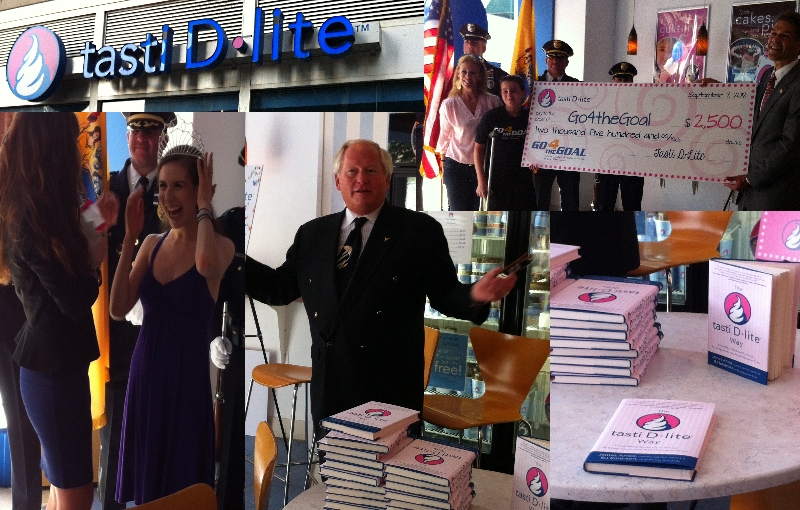It is not a mystery to those who follow SE that distinguishing yourself or your company from others is crucial for success. Coinciding with that idea, Tasti D-Lite released a book that begins by highlighting the fact that they recognized what makes them different from their competitors at a very early stage. They had the advantage by identifying how to stand out and utilized social media to brand themselves. We review the book and share the most important lessons learned.
Tasti D-Lite cannot be categorized as ice cream due to its low butterfat content and due to its lack of active culture, is not part of the frozen yogurt group, but regardless of its non-category, it has gained popularity all over the country and globally. It has appeared in various Sex and the City episodes and mentioned in 30 Rock, The Apprentice, and Girls. Tasti D-Lite capitalizes on the fact that they have a great-tasting, healthy product, which through their vision, lead the way using social media to build the brand and expand.
The story also concurs with one of our strongest belief – perseverance. The book provides a timeline of main events that got Tasti D-Lite where it is now. Their recipe was created in 1987, three years after stores in Manhattan were opened in 1990, and twelve years later they faced their first big problem with nutrition facts and were able to overcome it. In 2007 SPG Partners, a private equity group, bought them and a year after franchises were created. While the economy was down, Tasti D-Lite was opening more stores around the U.S. in 2011 and in 2012 opened a franchise in Australia.
The book does a great job stressing a valid point: a company, regardless of its size, comprehends that the interactions might not always end in a monetary gain, but these interactions are not any less beneficial to the company. The creators of Tasti D-Lite started to take advantage of social media by listening anywhere Tasti was being discussed. Then they realized how valuable Twitter was, which allowed them to stay in contact with their clients, especially if any negative comments were made. They obtained control in a digital realm, which brings us to the main theme of this book – transparency.
“The more transparent you are for yourself and for others, the more likely you are to want to give something of value while you are receiving something of value.”
Nowadays, consumers have more access to information about your business and the individuals behind the products and services they love. Authentic and transparent is preferable than masked and anonymous communication and content. Take control of what information is being shared and take control about the conversations clients are having through social media – or let others write the story for you.
Some great tips from the book:
· Look for reasons for disqualifying business and marketers both online and offline.
· Unless you are a megabrand, a celebrity, or some other icon, doing nothing other than posting out recurring updates won’t get you far on any social network – you have to be completely present, that is responding back to your followers.
· True listening is essential for conflict resolution and for growing intimacy with others at all levels of business and life.
· Bigger budgets won’t buy anything in today’s accessible world – a bigger customer loyalty will result in intentionally engaging in ways that are relevant, and yes that means using your humanity.
· Your desire to capture the hearts of those customers has to be stronger than whatever fears or discomfort you face.
· If your customers are not engaging, perhaps the value exchange equation has not been satisfied.
· Get people on board that have the same passion as you do because if people really care about a product and wish the best for it, embracing their input would seem reasonable.


